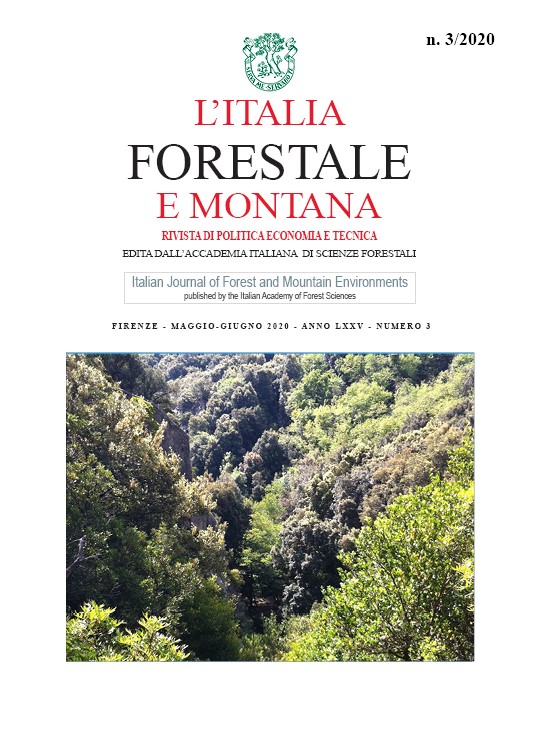Administrative violations of forestry interest: differences between regional regulations
Published 2020-07-11
Keywords
- forestry violations,
- administrative regions,
- imbalances
Copyright (c) 2020 Italian Journal of Forest and Mountain Environments

This work is licensed under a Creative Commons Attribution-NonCommercial 4.0 International License.
Abstract
The present work is proposed as a contribution to discussion about new Italian forest legislation and as a possible starting point for future policies. Some regional regulations have been compared for what concerns the administrative sanctioning rules applied in the sector. To give concreteness to the present argument, a specific case study has been carried out in the province of Cuneo (Piedmont, Italy). The istance has been chosen for its representativeness and high frequency, being its dendrometric parameters common in other regional contexts. Specifically, a pure meso-eutrophic beechwood has been analyzed. This has revealed a certain lack of homogeneity in the attribution of the form of forest management (coppice vs. highforest management systems). In fact there are different legal definitions of their dendrometric parameters. As a result, there are different silvicultural treatments to apply and very different levels of growing stock (in terms of number of trees, canopy cover area or tree volume) to be released. But it is above all the estimations of the allowable cut considered illegal (i.e. in stock volume and in number of trees), and even more the amounts of the administrative penalties that display the greatest differences. These differences would be even more relevant in the case of implementation of the European Union Regulation no. 995/2010, the so-called “Due Diligence”, which contrasts the trade of illegally sourced timber, and enumerates cases of law infringements strictly dependent on the configuration of the administrative offenses defined by regional regulations. The study carried out therefore highlights the opportunity to evaluate, in the appropriate areas of interinstitutional collaboration, the control algorithms for the best possible harmonization of the applicable regulations in Italy; the final goal should be the reduction of possible competitive imbalances between various companies operating in different regional contexts.

